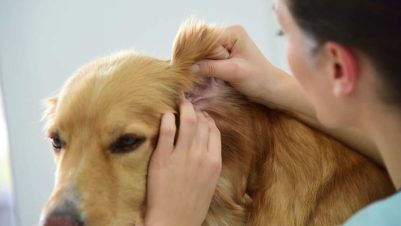Have you ever wondered if there is a difference in the occurrence of oral lesions in domestic and non-domestic felids? Or whether papilloma is more predominant in cougars or leopards? Does a tiger with a toothache suggest a lesion or a cyst? Then sate your curiosity with the first of our new video series in collaboration with NationWide Laboratories!
Join the pathologists of NationWide Laboratories as they dive into the latest veterinary literature looking for and breaking down research gems that will help you up your pathology game.
For this edition of the Journal Club, Dr Marvin Firth, BVSc (Hons), DipRCPath, DipFMS, AFHEA, MRSB, MRCVS, breaks down research conducted by Scott et al. (2020) on oral lesions in captive, non-domestic felids, with a focus on odontogenic lesions.
Background – why was the study conducted?
Generally, odontogenic lesions are well described in animals, reported with classification schemes that closely follow human oral pathology. However, despite recent advances in classification and nomenclature, incidence reporting of odontogenic lesions is sparse across species, especially for non-domestic ones. Furthermore, those that are reported only tend to be single cases or those of particular interest, for example “uncommon” or “unique” ones.
Despite recent advances in classification and nomenclature, incidence reporting of odontogenic lesions is sparse across species, especially for non-domestic ones
Scott et al. (2020), therefore, aimed to report oral lesions diagnosed in captive, non-domestic felids and compare the findings to those in domestic cats and common literature.
Materials and methods
The authors conducted a retrospective study using data mined from cases that the Northwest Zoological Pathology Group has on file. Cases were split into four groups based on the lesions:
- Non-odontogenic neoplasia (benign and malignant)
- Inflammatory
- Odontogenic lesions and cysts
- Other diagnoses (including non-odontogenic developmental and deposition disorders such as cleft palate, etc)
Biopsies were H&E sections taken from the formalin-fixed paraffin-embedded (FFPE) tissue for a pathologist to diagnose. If an odontogenic lesion was diagnosed, two other pathologists reviewed the case. When confirmed, any additional information was collated and reviewed (ie radiographic history and gross photos).
Results
Of the original cases, 109 met the study criteria. This number included: 36 snow leopards, 25 tigers, 13 lions, 12 cheetahs, 5 cougars, 5 leopards, 3 jaguars, 3 ocelots, 2 lynxes, 2 servals, 1 Geoffrey’s cat, 1 bobcat and 1 fishing cat.
Each felid was diagnosed with one oral lesion, of which neoplasia was the most common (51 percent). Out of this category, papilloma was the most common and seen predominately in snow leopards (30 cases). Some (>19/39) had viral cytopathic effects. Squamous cell carcinoma (SCC) was the second most common neoplasia but the most common malignancy – a result similar to that seen in domestic cases.
Inflammation was the second most common category at 38 percent. Thirty-three cases were lymphoplasmacytic (non-eosinophilic) and eight were eosinophilic (predominately in tigers (7/8)).
Odontogenic lesions were the third most common category, and overall were quite a small proportion (9 percent) of the oral lesions studied
Odontogenic lesions were the third most common category, and overall were quite a small proportion (9 percent) of the oral lesions studied. Of these, nine were fibromatous epulis of periodontal ligament origin (FEPLOs) and one was a cyst. FEPLOs arise from the maxillary or mandibular gingiva surrounding canine, premolar or molar teeth. These lesions were seen predominantly in lions (4/9) of a wide age distribution (13 to 21 years), with others arising in jaguars (2), a bobcat, a cougar and a serval.
Take-home messages and conclusions
Odontogenic lesions only account for a very small proportion of oral lesions in captive, non-domestic felids.
The odontogenic lesions were predominantly FEPLOs, a pattern commonly seen in the oral tumours of domestic dogs but less so in domestic cats. These results show a surprising overall difference in the presentation of oral tumours in domestic and non-domestic cats. Though FEPLO was diagnosed in five species of non-domestic felids, it was most common in lions.
The odontogenic lesions were predominantly FEPLOs, a pattern commonly seen in the oral tumours of domestic dogs but less so in domestic cats
Interestingly, the authors found that regrowth was rare when biopsies were taken – a commonality with the biological behaviour of these tumours in domestic cases.
Finally, the high incidence of papilloma in snow leopards could mean there is a relationship between SCC and papillomavirus – a fact suggested in current research.
About Nationwide Laboratories
NationWide Laboratories is committed to making a positive impact on animal health by offering innovative products, technology and laboratory services. They offer friendly advice and rapid, reliable results to help fulfil your diagnostic and therapeutic objectives, and their expert teams can assist you in making decisions on relevant testing for companion, exotic and farm animals. They offer full interpretation across a range of testing areas, including biochemistry, haematology, cytology, histopathology, endocrinology, microbiology and more.
NationWide Laboratories is focused on keeping their service modern and relevant to the veterinary field. They have added a new, extra fast and super-efficient slide digitalisation system into the workflow, which means improved turnaround times and better first time results for you. They are also able to receive images from practices and offer a slide scanning service.
NationWide Laboratories is customer focused, passionate about animal welfare and always advancing! Their teams have the depth of knowledge and experience to help you help your clients.
To learn more please visit their website and follow them on LinkedIn and Twitter.







